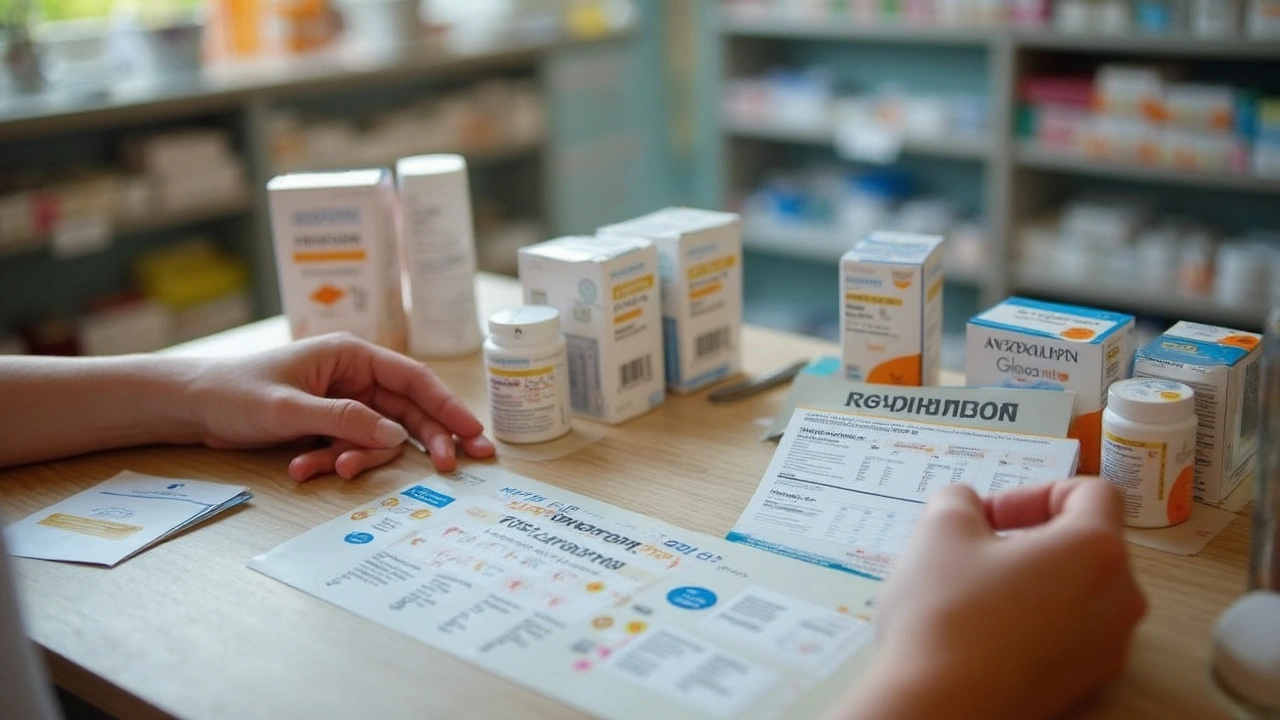The wrong antibiotic can do more harm than good, and make future infections harder to treat. 'Antibiotic spectrum' tells you which bacteria a drug can kill or stop. Knowing the spectrum makes the choice smarter and safer.
Broad-spectrum antibiotics work against many types of bacteria. Examples include amoxicillin-clavulanate, doxycycline, and ciprofloxacin. Narrow-spectrum antibiotics target fewer bugs. Think penicillin V for strep throat, dicloxacillin for skin infections from staph, or nitrofurantoin for uncomplicated bladder infections. Choosing the right spectrum lowers side effects and helps prevent resistance.
Doctors look at the infection site, common germs for that site, how sick the patient is, allergies, kidney and liver health, and local resistance patterns. For a simple urinary tract infection, a narrow drug that targets E. coli is usually best. For severe pneumonia where the exact germ is unknown, a doctor might start with a broader drug and narrow it later. If you have a known allergy to penicillin, that changes the options fast.
When possible, clinicians get cultures or rapid tests. Tests show which antibiotic a germ is sensitive to. That lets the doctor switch from a broad drug to a narrow one, a practice called de-escalation. De-escalation reduces side effects and slows resistance. Stewardship also means avoiding antibiotics for viral illnesses like colds and most sore throats.
Side effects vary. Common ones include stomach upset, yeast infections, and rashes. Some drugs have special risks: fluoroquinolones can harm tendons, certain antibiotics affect the liver, and others interact with common medicines. Tell your clinician about pregnancy, breastfeeding, other drugs, and medical history before starting treatment.
Practical tips for patients: ask why a specific antibiotic was chosen and whether a narrower option exists. Follow dosing instructions and timing. Finish the course only if your doctor says to - some conditions need shorter treatment than older rules suggested. If pills upset your stomach, ask whether taking them with food helps.
Watch for warning signs: high fever that doesn't improve, spreading redness or swelling, severe diarrhea, or an allergic reaction like swelling or trouble breathing. If any of these occur, stop the antibiotic and seek medical help.
Common myths and quick examples: Antibiotics do not treat viruses. For sore throats, a rapid strep test tells you if penicillin or amoxicillin is needed. Many sinus infections improve without antibiotics in a week. Traveler's diarrhea sometimes benefits from a short course or single-dose antibiotic, but only after weighing risks. Acne treatment often needs long-term care and sometimes topical options work before oral antibiotics.
Kids and older adults need adjusted doses and extra care. Tell your doctor about kidney problems, liver disease, pregnancy, or breastfeeding. Your pharmacist can explain interactions, best timing, and how to store pills. Keep a list of past antibiotic reactions to show clinicians too.
Choosing the right antibiotic spectrum matters for your recovery and for everyone's future treatment options. Ask questions, follow instructions, and keep antibiotics working for the next person.

Curious which over-the-counter options stack up against amoxicillin? This article explores 10 OTC antibiotics or drugstore products with similar effects, comparing their efficacy and use. You’ll find interesting facts, tips on choosing the right alternative, and practical stats, all structured for clarity. Get ready for an in-depth, honest look at how drugstore meds measure up to this popular prescription antibiotic. From hidden risks to smart ways to shop, this guide covers what you need before making a decision.
Generic drugs make up 90% of prescriptions but only 20% of spending - and that’s why they’re disappearing. Cheap prices, foreign factories, and broken incentives are causing critical drug shortages affecting millions.
Learn how to safely buy cheap generic Celebrex online, spot legit pharmacies, compare prices, avoid scams, and save money with proven tips for 2025.
This article delves into seven noteworthy alternatives to WebMD for those seeking reliable health information. Each platform offers unique features and focuses, from expert-reviewed content to user-friendly interfaces. Readers will discover the pros and cons of each option, helping them make informed choices about where to turn for trusted medical guidance.
A clear, side‑by‑side comparison of Lamictal dispersible (lamotrigine) with top mood‑stabilizer alternatives, covering efficacy, side effects, pregnancy safety, and how to pick the best option.
Get the lowdown on Zyprexa, a medication widely used for serious mental health conditions like schizophrenia and bipolar disorder. This deep dive covers how it works, what to expect, tips for handling side effects, and real-life facts you won't find on drug labels. Whether you're navigating a new diagnosis or supporting someone who takes Zyprexa, you'll find practical advice and clear info right here.